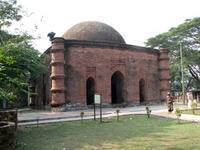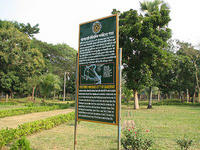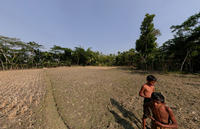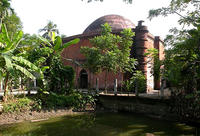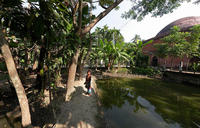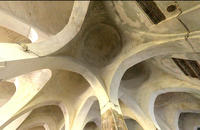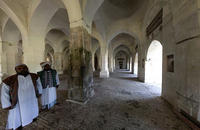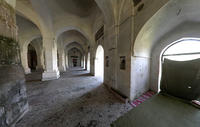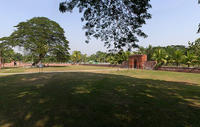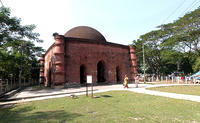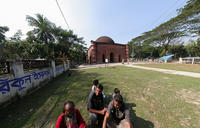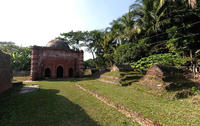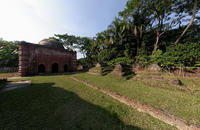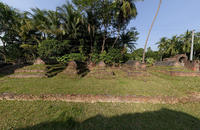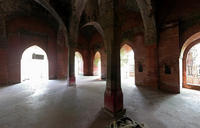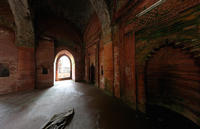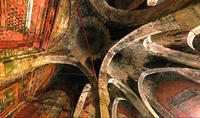You are in: Asia -> Bangladesh -> Historic Mosque City... , and traditional search or Image Gallery will yield results of this site only
Historic Mosque City of Bagerhat
| Site number: | 321 |
|
| Type of site: | Cultural | |
| Date: | 15th century | |
| Date of Inscription: | 1985 | |
| Location: | Asia, Bangladesh, Khulna District | |
Up to 75 images are shown here. Click on each for more details or on Image Gallery for more images.
| Description: | At the meeting-point of the Ganges and Brahmaputra rivers lies this ancient city, previously known as Khalifatabad. Situated in the suburbs of Bagerhat, it was founded by Ulugh Khan Jahan, a Turkish general of the 15th century. The infrastructure of the city shows considerable technical skill, and reveals an extraordinary number of mosques and early Islamic monuments (many built of brick). --WHMNet paraphrase from the description at WHC Site, where additional information is available. For 360 degree imaging of this site, click here. | |
| Mosque City of Bagerhat is one of the three World Heritage Sites in Bangladesh. This historic city is located within Bagerhat District in south-west Bangladesh. It was founded by Turkish general Ulugh Khan Jahan in the early 15th century. Originally this ancient city was known as Khalifatabad. The city is renowned for its large concentration of mosques and Islamic monuments. More than 50 monuments have been catalogued as part of the citation by UNESCO World Heritage. These include Shatgombuj Mosque, masoleum of Khan Jahan, the mosques of Singar, Bibi Begni, Reza Khoda, Zindavir etc. The Sixty Pillar Mosque (the Shatgumbad) is a mosque located in Bagerhat, south Bangladesh. This is one of the oldest mosques in the country. It attracts a large number of tourists and visitors every year. It has more than sixty pillars with its eighty one gambuj or domes. Seventy seven domes are over the roof and four smaller ones over the four corner towers. It was established by Khan Jahan Ali, a Muslim saint and the local ruler of Bagerhat, during the 15th century CE. The mosque is decorated mostly with terracotta and bricks. As it is heard that this mosque had been used for three purposes: as a prayer mosque, as an assembly hall on early times of Muslims, and a Madrasa. --Wikipedia. Text is available under the Creative Commons Attribution-ShareAlike License. For 360 degree imaging of this site, click here. | ||
| Source: | http://whc.unesco.org/en/list/321 | |
| Reference: | 1. UNESCO World Heritage Center, Site Page. | |








